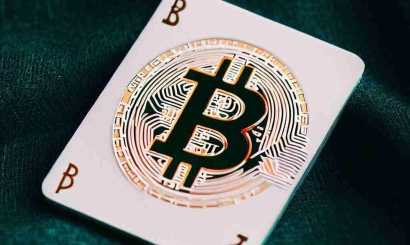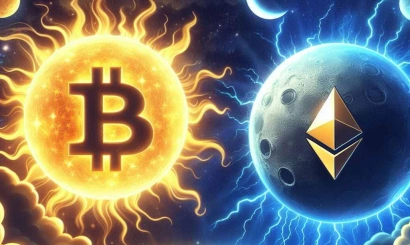"Don't give in to panic." What will happen to the bitcoin price in February
Experts commented on the current state of the crypto market and assessed its future prospects
The rate of bitcoin rose as inflation in the U.S. slowed. After the publication of the U.S. Labor Department's data on consumer prices in the country in January, the value of the first cryptocurrency instantly rose by $ 600, from $21.6 thousand to $22.2 thousand.
On the evening of February 14, it became known that inflation in the U.S. slowed to its lowest since October 2021. Following the results of January it rose on an annualized basis by 6.4%, a month earlier this indicator was 6.5%.
Interviewed experts commented on the current state of the crypto market and assessed its future prospects.
"The market needed this correction".
CEO Exmo. me
On Tuesday, February 14 (Valentine's Day) came out with slightly disappointing data on inflation in the U.S., this is the "gift" prepared for traders. U.S. CPI slowed to 6.4% in January but came out above expectations (6.2%). This was helped by the increase in gasoline prices (10%) and oil futures. After this data was published, the bitcoin (BTC) price was moving sideways.
Unlike the stock market, cryptocurrencies showed more steady movement. BTC managed to keep important support at the level of $21.5 thousand, after which the first cryptocurrency literally "exploded" and rose above $22 thousand, where it was fixed. The movement was not as strong as everyone expected. Of course, volatility increased, but the price remained in a narrow price range of $21,500 - $22,500.
By and large, the price of BTC reacts only to inflation, unemployment and the Fed interest rate. Cryptocurrency responds less frequently to all other economic indicators. Correlation with major indices sometimes increases and sometimes decreases. The January move showed a high correlation between BTC and the stock market.
However, yesterday, February 14, BTC behaved much more predictably and "calmly" than SPX. At the moment, the first cryptocurrency correlates the most with the price of gold.
Closer to the date of halving (the embedded reduction in bitcoin miners' rewards
in the code), the correlation with the indices will weaken. Historically, about 8 months before halving, the cryptocurrency market enters a full bullish trend.
Provided the "calm" on the news background the BTC price will be able to break through the nearest resistance of $22.5K. After that it will rebound to $23K - $23.5K. If we look a bit further, there is a chance that BTC will reach $25K. The optimal solution for medium- or long-term traders is to form a position now. And the main movement can be expected in the summer of 2023. Around that time a lot of variables coincide: interest rate hike stop, expected US unemployment to rise, 8 months to BTC halving, and so on.
The BUSD situation has brought nervousness to the cryptocurrency market, and market participants have clearly become accustomed to this kind of situation. The market has already recouped the fall after the collapse of the FTX exchange. However, this news again forced crypto traders to assess the risks of their positions. Don't jump to conclusions and don't panic, the situation is already starting to stabilize.
"Investors have calmed down a bit."
BitRiver Financial Analyst
The market initially reacted lower to the inflation report, amid a new dollar rally. Inflation slowed, but not as fast as many had expected. Federal Reserve (Fed) officials, led by Chairman Jerome Powell, continue to advocate for higher rates until they get the situation under control.
The BTC/USDt pair was down to the $21,532 level, from which the price ricocheted 3.65% to $22,319. Although the Consumer Price Index fell short of the 6.2% forecast, investors expect the Fed to raise rates by 25 basis points, to 5% per year, at its March 22 meeting. According to the latest CME Group data, rate futures account for a rate hike to 5% with a probability of 87.8% versus 90.8% before the data release. That is, investors have calmed down a bit and started buying risky assets (U.S. stocks and cryptocurrency).
Bitcoin does not correlate with US economic policy. Statistics influence the stock and currency markets, and bitcoin is closely correlated with the S&P 500 and Nasdaq index. The correlation with the S&P 500 over 90 trading days is 0.7 and with the Nasdaq is 0.72. The correlation with the dollar is negative and is -0.78.
The price has pushed back from $21.3k to $21.5k support and remains above $22k. The technical picture is favorable for a continued rally to $25k. The crypto market survived the inflation report and now buyers have until March 22. Buyers now need to get back to $23.3k within two days. An analysis of bitcoin dynamics before the halving shows that bitcoin could easily return to its all-time high of $69k by early 2025.
- Creators of Cardano-based dApps have stepped up dramatically
- The WSJ has learned of $150 million earned by the fund of a former top FTX executive
- Optimism on the Range. What you need to know about L2 solutions for Ethereum
- Court allows FTX to sell shares in companies and other assets
- NFT issuance leads to new records in the bitcoin network




_410x245_00e.webp)


